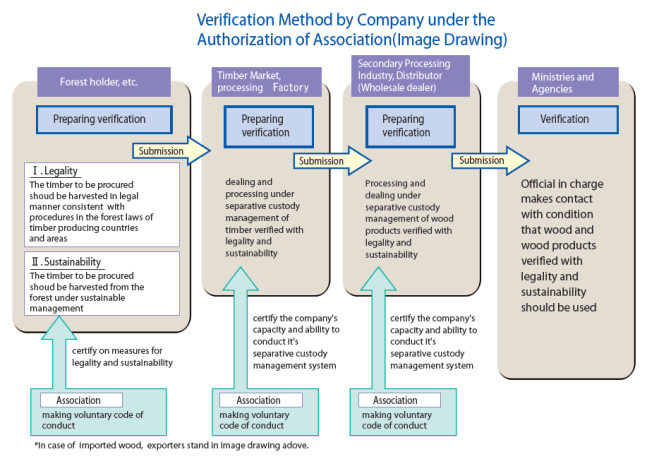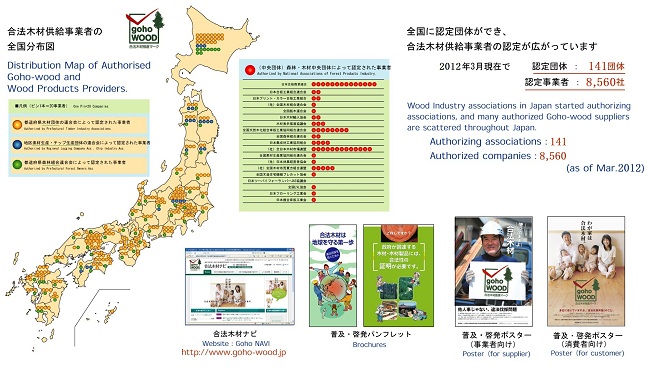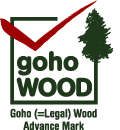
- Welcome to the Goho (=legal)-wood navigation page, provided by Council for Tackling Illegal Logging and Promotion of Goho-wood
- World HOME >
- Outline of Goho-Wood >
- Goho wood Supply in Japan
"Goho-wood" Japan's measures against illegal logging
In 1998, at the Birmingham Summit in England, Japan endorsed the G8 Action Program on Forests, which is an action plan that concerns forests of the world (concerning, among other things, measures against illegal logging), and since the Kyushu-Okinawa Summit in 2000, Japan has constantly advocated the importance of measures against illegal logging, based on the principle that 'illegally harvested timber should not be used.'
In the meantime, Japan has worked to develop technologies for timber tracing in timber-exporting countries and for checking the state of forests using satellite data, exchanged information with related countries, and supported projects against illegal logging implemented by the International Tropical Timber Organization (ITTO) in order to address the issue of illegal logging.
Moreover, based on the discussions at the G8 summit at Gleneagles in UK in July, 2005, the Japanese Government introduced, as a new action against illegal logging, measures to ensure that it procures wood with verified legality and sustainability under the Green Purchasing Law in April, 2006.

Procurement Policy of Government and 'Guideline'
The Japanese Government determined the inclusion of wood and wood products verified as being legally and sustainably produced (Goho-wood) in the list of designated procurement items based on the Law Concerning the Promotion of the Procurement of Eco-Friendly Goods and Services by the State and Other Entities (Law No. 100 of 2000) (the Green Purchasing Law), starting from April 2006. The following five categories of wood and wood products are among the designated procurement items under the Basic Policy on Promoting Green Purchasing:
① Paper (Example: form papers, printing papers, etc.)
② Stationary (Example: business envelopes, notebooks, etc.)
③ Office furniture (Examples: chairs, desks, shelves, etc.)
④ Interior fixtures and bedding (Example: bed frames)
⑤ Public works material (Example: lumber, glued laminated timber, plywood, laminated veneer lumber, flooring, etc.)
Individual companies must voluntarily certify the legality and sustainability of wood and wood products and are expected to be held responsible for the above. The Forestry Agency indicates examples of 3 methods of verification of the legality and sustainability of wood and wood products in the 'Guideline for Verification on Legality and Sustainability of Wood and Wood Products (Japanese, English).'
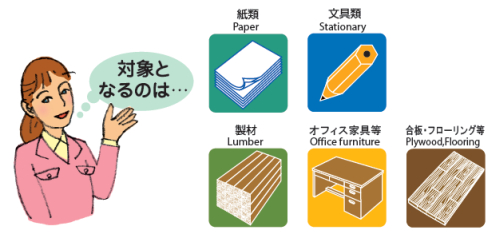
Verification methods indicated in the 'Guideline'
1.Forest certification system and chain of custody system
This is a method that utilizes certification seals under forest certification systems and chain of custody systems (such as SGEC, FSC, and PEFC certification).
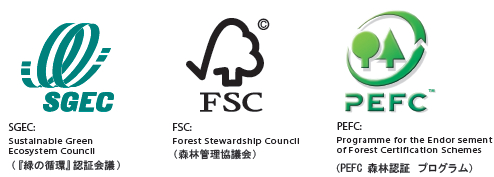
2.Verification method by company under the authorization of association
This is a method, in which respective associations in the wood industry, after developing their voluntary code of conduct, certify individual companies and the above certified companies (authorized as Goho-wood suppliers) give a “certificate of legality and sustainability” to the company at the next level to form a chain of verification on legality and sustainability.
3.Verification method by original measure of each company
Companies such as those of a large scale, not adopting methods 1 or 2, verify legality and sustainability via their original measures under comprehension of the distribution process from harvesting to delivery. Please note that it is necessary to work to ensure a similar level of reliability as that of the verification method by company under the authorization of association as described in 2 above.


 World
World